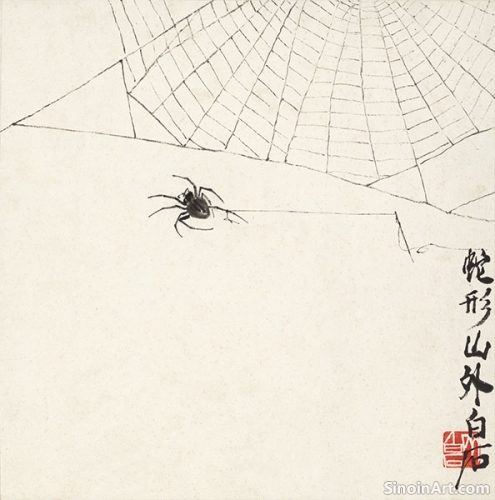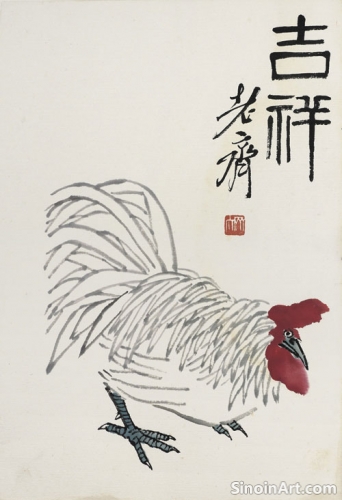Xieyi Painting and the Use of "Boneless Technique" ( Mògǔ)
|
The "Boneless Technique," or mògǔ (沒骨), is a distinctive approach in Xieyi painting, characterized by the absence of outlines, instead using washes of ink and color to create form and define the subject. The ink is applied directly to the paper to create form, often layered and blended. This technique focuses on color and ink washes, with no outlines to define the forms.  The "boneless technique" relies on the artist's skill in blending and layering washes, creating a sense of depth, volume, and texture using only ink and colors. It requires a masterful level of control over the mediums. The blending and layering techniques have to be precisely executed to achieve the desired effects.  This technique often results in artworks that appear more fluid and organic, as the forms seem to emerge naturally from the ink and colors. The lack of hard lines emphasizes the fluidity of the ink and the organic feel of the subject. It has a natural and spontaneous feeling.  The mògǔ technique requires a strong sense of spatial awareness and an understanding of how different tones and colors will interact on the paper. The artist must have a strong sense of control and a good understanding of the color blending process. It requires an advanced level of skill to execute correctly. While the boneless technique seems simple, it requires a mastery of the materials and the artistic process. It is a challenging but extremely effective and rewarding technique to use in the Xieyi tradition. The effects are always subtle, but the impact is powerful and highly expressive. |
Tag : Boneless technique, Mogu, no outline, ink wash, Chinese art method
Related information
- Xieyi Painting and the Concept of "Yi Qian Bi Hou"
- The Ink of Xieyi: A Palette of Grays
- Learning Xieyi Painting: A Path of Practice
- The Cultural Significance of Xieyi: Beyond Artistic Form
- The Brushstrokes of Xieyi: Mastering Spontaneity
"Yi Qian Bi Hou" (intention before the brush) is central to Xieyi, emphasizing the importance of having a clear vision and intention before painting, so that brushstrokes naturally express the artist's inner feelings and ideas, requiring thoughtful preparation, and guiding brushwork with creativity and personal vision.
This article focuses on the significance of ink in Xieyi painting, exploring its tonal variations, preparation process, and application techniques, emphasizing its role in capturing the essence of a subject.
Learning Xieyi painting involves mastering basic brushstrokes, observation of nature, studying old masters, developing a personal style, and cultivating patience and persistence. It is a process that blends technical skill with personal growth and understanding.
This article explores the cultural significance of Xieyi painting, highlighting its connection to Daoist philosophy, Chinese values, artistic heritage, and its role in preserving and expressing Chinese cultural identity.
This article delves into the various brushstrokes and techniques used in Xieyi painting, emphasizing the importance of mastering spontaneity and ink control to convey the spirit of the subject.